 Introduction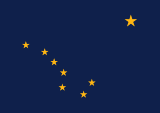   Alaska (/əˈlæskə/ ə-LASS-kə) is a non-contiguous U.S. state on the northwest extremity of North America. It is in the Western United States region, and is considered to be the northernmost, westernmost, and easternmost (the Aleutian Islands cross the antimeridian into the eastern hemisphere) state in the United States. To the east, it borders Canada (the Yukon territory, and the province of British Columbia). It shares a western maritime border, in the Bering Strait, with Russia's Chukotka Autonomous Okrug. The Chukchi and Beaufort Seas of the Arctic Ocean lie to the north, and the Pacific Ocean lies to the south. Technically a semi-exclave of the U.S., it is the largest exclave in the world. Alaska is the largest U.S. state by area, comprising more total area than the next three largest states of Texas, California, and Montana combined, and is the seventh-largest subnational division in the world. It is the third-least populous and most sparsely populated U.S. state, but is, with a population of 736,081 as of 2020, the continent's most populous territory located mostly north of the 60th parallel, with more than quadruple the combined populations of Northern Canada and Greenland. The state contains the four largest cities in the United States by area, including the state capital of Juneau. The state's most populous city is Anchorage, and approximately half of Alaska's residents live within its metropolitan area. Indigenous people have lived in Alaska for thousands of years, and it is widely believed that the region served as the entry point for the initial settlement of North America by way of the Bering land bridge. The Russian Empire was the first to actively colonize the area beginning in the 18th century, eventually establishing Russian America, which spanned most of the current state, and promoted, and maintained, a native Alaskan Creole population. The expense and logistical difficulty of maintaining this distant possession prompted its sale to the U.S. in 1867 for US$7.2 million (equivalent to $157 million in 2023). The area went through several administrative changes before becoming organized as a territory on May 11, 1912. It was admitted as the 49th state of the U.S. on January 3, 1959. Abundant natural resources have enabled Alaska—with one of the smallest state economies—to have one of the highest per capita incomes, with commercial fishing, and the extraction of natural gas and oil, dominating Alaska's economy. U.S. Armed Forces bases and tourism also contribute to the economy; more than half of the state is federally-owned land containing national forests, national parks, and wildlife refuges. It is among the most irreligious states, one of the first to legalize recreational marijuana, and is known for its libertarian-leaning political culture, generally supporting the Republican Party in national elections. The Indigenous population of Alaska is proportionally the second highest of any U.S. state, at over 15 percent, after only Hawaii. (Full article...) Entries here consist of Good and Featured articles, which meet a core set of high editorial standards.
The Alaska-class were six large cruisers ordered before World War II for the United States Navy (USN), of which only two were completed and saw service late in the war. The USN designation for the ships of this class was 'large cruiser' (CB), a designation unique to the Alaska-class, and the majority of leading reference works consider them as such. However, various other works have alternately described these ships as battlecruisers despite the USN having never classified them as such, and having actively discouraged the use of the term in describing the class. The Alaskas were all named after territories or insular areas of the United States, signifying their intermediate status between larger battleships (which were mostly named after states) and smaller heavy and light cruisers (which were named after cities). The idea for a large cruiser class originated in the early 1930s when the USN sought to counter the Deutschland-class "pocket battleships" being launched by Germany. Planning for ships that eventually evolved into the Alaska-class began in the late 1930s after the deployment of Germany's Scharnhorst-class battleships and rumors that Japan was constructing a new large cruiser class, the B-65 "super cruiser." To serve as "cruiser-killers" capable of seeking out and destroying these post-treaty heavy cruisers, the class was given large guns of a new and expensive design, limited armor protection against 12-inch shells, and machinery capable of speeds of about 31–33 knots (57–61 km/h; 36–38 mph). Of the six planned, Alaska and Guam were the only two to be completed; a third, Hawaii, was still building at the war's end and had its construction suspended on 16 April 1947, while the remaining three were cancelled. Alaska and Guam served with the USN for the last year of World War II as bombardment ships and fast carrier escorts. They were decommissioned in 1947 after spending only 32 and 29 months in service, respectively. (Full article...)TopicsCategoriesSelected article - The 1925 serum run to Nome, also known as the Great Race of Mercy and The Serum Run, was a transport of diphtheria antitoxin by dog sled relay across the US territory of Alaska by 20 mushers and about 150 sled dogs across 674 miles (1,085 km) in 5+1⁄2 days, saving the small town of Nome and the surrounding communities from a developing epidemic of diphtheria. Both the mushers and their dogs were portrayed as heroes in the newly popular medium of radio and received headline coverage in newspapers across the United States. Balto, the lead sled dog on the final stretch into Nome, became the most famous canine celebrity of the era after Rin Tin Tin, and his statue is a popular tourist attraction in both New York City's Central Park and downtown Anchorage, Alaska, but it was Togo's team which covered much of the most dangerous parts of the route and ran the farthest: Togo's team covered 261 miles (420 km) while Balto's team ran 55 miles (89 km). The publicity also helped spur an inoculation campaign in the U.S. which dramatically reduced the threat of the disease. (Full article...)Selected picture - Fairbanks and the Alaska Range at midday during the winter solstice, looking south from the hills above Farmers Loop Road. Photo credit: User: Joe n bloe General imagesThe following are images from various Alaska-related articles on Wikipedia.
Recognized contentFeatured articlesGood articles
Featured pictures
Former featured pictures
Related Portals
Related WikiProjectsState facts
State symbols:
Tasks
Associated WikimediaThe following Wikimedia Foundation sister projects provide more on this subject:
Discover Wikipedia using portals |
How Can We Help?
















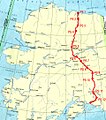












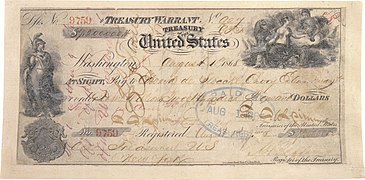



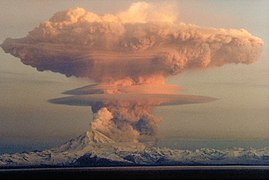
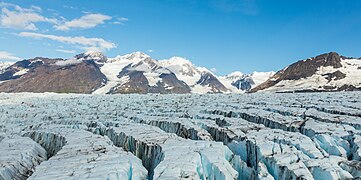





























Recent Comments